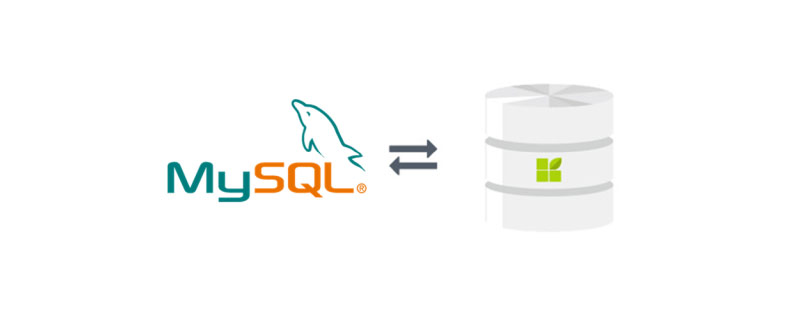Home >Database >Mysql Tutorial >What are the databases
What are the databases
- 藏色散人Original
- 2019-01-29 16:40:2532801browse
A database is a collection of information that can be easily accessed, managed and updated. Commonly used databases include: 1. Relational database; 2. Distributed database; 3. Cloud database; 4. NoSQL database; 5. Object-oriented database; 6. Graph database.

Computer databases typically contain aggregations of data records or files, such as sales transactions, product catalogs and inventories, and customer profiles.
Generally, the database manager provides users with the ability to control read and write access, specify report generation, and analyze usage. Some databases provide ACID (Atomicity, Consistency, Isolation, and Durability) compliance to ensure data consistency and transaction integrity.
Databases are commonly found in mainframe systems, but also in smaller distributed workstations and midrange systems such as IBM's AS/400 and personal computers.
The evolution of database
The database began to develop in the 1960s, starting from hierarchical databases and network databases, to object-oriented databases in the 1980s, and then to today's SQL and NoSQL databases and cloud databases.
One view is that databases can be classified according to content type: bibliographic, full-text, digital and image. In computing, databases are sometimes classified based on their method of organization. There are many different types of databases, from the most popular approach relational databases to distributed databases, cloud databases or NoSQL databases.
Commonly used databases:
1. Relational database
Relational database was developed by E.F. Codd of IBM in 1970 Invented, it is a tabular database in which data is defined so it can be reorganized and accessed in many different ways.
A relational database consists of a set of tables in which data belongs to predefined categories. Each table has at least one data category in a column, and each row has a specific data instance for the category defined in the column.
Structured Query Language (SQL) is the standard user and application programming interface for relational databases. Relational databases are easy to extend, and new data categories can be added after the original database is created without modifying all existing applications.
2. Distributed database
A distributed database is a database in which parts of the database are stored in multiple physical locations and processed between different points in the network Distribute or copy.
Distributed databases can be homogeneous or heterogeneous. All physical locations in a homogeneous distributed database system have the same underlying hardware and run the same operating system and database applications. The hardware, operating system, or database application in a heterogeneous distributed database may be different at each location.
3. Cloud database
Cloud database is a database optimized or built for virtualized environments (hybrid cloud, public cloud or private cloud). Cloud databases offer benefits such as the ability to pay for storage capacity and bandwidth on a per-use basis, and can provide scalability and high availability as needed.
Cloud databases also provide enterprises with the opportunity to support business applications in software-as-a-service deployments.
4. NoSQL database
NoSQL database is very useful for large distributed data sets.
NoSQL databases are very effective for big data performance problems that relational databases cannot solve. They are most effective when organizations must analyze large amounts of unstructured data or data stored on multiple virtual servers in the cloud.
5. Object-oriented database
Items created using object-oriented programming languages are usually stored in relational databases, but object-oriented databases are well suited for these items.
Object-oriented databases are organized around objects (not operations) and data (not logic). For example, multimedia records in a relational database can be definable data objects rather than alphanumeric values.
6. Graph database
A graph-oriented database is a NoSQL database that uses graph theory to store, map, and query relationships. A graph database is basically a collection of nodes and edges, where each node represents an entity and each edge represents a connection between nodes.
Graph databases are increasingly popular for analyzing interconnections. For example, companies can use graph databases to mine data about customers from social media.
Accessing Databases: DBMS and RDBMS
A database management system (DBMS) is software that allows you to define, manipulate, retrieve, and manage data stored in a database .
Relational database management system (RDBMS) is a database management software based on the relational model developed in the 1970s and is still the most popular database management method.
Microsoft SQL Server, Oracle Database, IBM DB2 and MySQL are the most commonly used RDBMS products by enterprise users. DBMS technology began in the 1960s and supports hierarchical databases, including IBM's Information Management System and CA's Integrated Database Management System. A relational database management system (RDBMS) is a type of database management software that was developed in the 1970s and is based on the relational model and remains the most common way of managing databases.
Recommended: "mysql tutorial"http://www.php.cn/course/list/51.html
The above is the detailed content of What are the databases. For more information, please follow other related articles on the PHP Chinese website!

